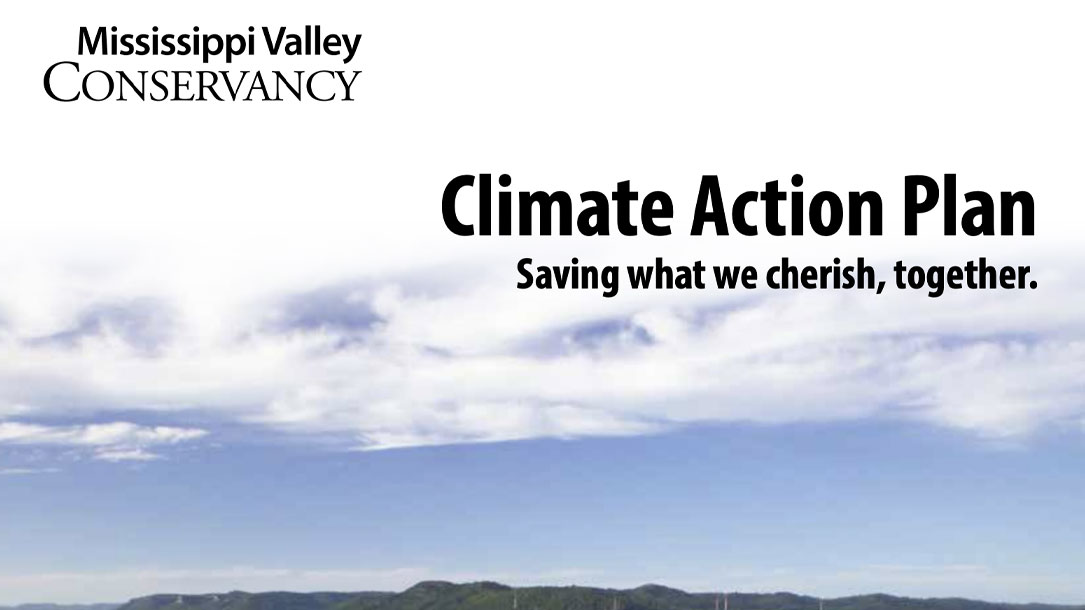Home > Climate News >

Largest urban forest carbon credit purchase to support conserving land
The largest urban forest carbon credit sale in the nation, as of 2021, will support land conservation in the southwestern Pennsylvania region by Allegheny Land Trust.
This significant purchase increases the capacity of the land trust to conserve and care for more crucial green space in southwestern Pennsylvania…

The science of solar-pollinator habitat: a fact sheet
Land trusts and community groups can help their communities understand how the design, implementation, and management of solar fields can work to enhance biodiversity and pollinators as well as farming and ranching. In this case, a recent fact sheet by the AgriSolar Clearinghouse provides useful information share.

Climate change threatens the Great Plains, but bison may hold a key to resilience
“The 8,600-acre Konza Prairie Biological Station where Kansas State conducts its bison research lies in the Flint Hills, North America’s biggest remaining stretch of tallgrass prairie.
Once one of North America’s major ecosystems — covering large swaths of the Great Plains from what is today central Texas to south-central Canada — settlers and their descendants destroyed more than 95% of the continent’s tallgrass prairie for cropland and other development. Tallgrass in the Flint Hills escaped the plow only because the region’s shallow soil and rocky layers made farming less practicable there…
Bison act and eat differently than cattle do, though biologists say not all the differences are clear yet. Few studies compare these two bovine herbivores side by side.
Still, a few differences jump out. The bigger species not only eats more grass, it also spends less time along streams than cattle do and more time on hilltops…”
Cattle may not boost plant biodiversity on the prairie as much as bison do, but The Nature Conservancy thinks it’s possible to manage them in ways that support healthier grassland.
They are working with a Flint Hills cattle rancher near Strong City in Kansas, along with Kansas State scientists, to see how fitting a herd with GPS collars might help….

Nature-based solutions funding database
National Wildlife Federation has created an interactive database for communities interested in pursuing federal funding and/or technical assistance for nature-based solutions. You can use their filters to search for nature-based solutions funding and technical assistance resources that fit your needs. For additional information on search filters, see their Glossary page.

New England’s climate imperative: our forests as a natural climate solution
In this study, five pathways are developed and assessed that could increase the climate mitigation potential of New England’s forests:
- Avoided deforestation
- Wildland reserves
- Improved forest management
- Mass timber construction
- Urban and suburban forests

Healthy soil grants
Vermont farmers have an essential role to play in combating climate change. Some farming practices can trap carbon and keep it out of the atmosphere, while supporting wildlife habitat, healthier soils, and cleaner water. The challenge can be sustaining profitability while making significant changes.
Which practices are worth the investment? And how long will they take to pay off?
To answer these questions and more, we are partnering with Bio-Logical Capital and the University of Vermont on a Conservation Innovation Grant funded by the Natural Resources Conservation Service. This five-year research project will provide direct payments to Vermont farmers who agree to implement farming practices that improve soil health…

Rescuing the planet
On Dec 1st at 7p.m. eastern, join the Natural Areas Conservancy (of New York City) and the Cary Institute for a virtual book talk featuring author and scholar Tony Hiss. He will discuss his new book, Rescuing the Planet – Protecting Half the Land to Heal the Earth, in conversation with Cary President Dr. Joshua Ginsberg and the Natural Areas Conservancy’s Executive Director Sarah Charlop-Powers.
In Rescuing the Planet, Hiss takes stock of the “superorganism” that is Earth and what we can do to keep it, and ourselves, alive. He invites [people] to understand the gravity of the problems we face, and makes the case for why protecting half the land by 2025 is vital to halting the extinction crisis and ensuring the health of our planet.

Mississippi Valley Conservancy: Climate Action Plan
What is it about the Driftless area you love? Is it the foggy mornings overlooking the valley? Or going fishing with your family in the spring? Perhaps it’s the sounds of migrating sandhill cranes and the call of the spring peepers.
Too often we think of climate change as occurring on a global scale or something that will happen in the future. Yet climate change already is causing profound changes with damaging effects to the land and water you love: wildlife habitat, lakes and streams, and farmland, right here in the Driftless Area, are at risk as never before.

Two groups want to put focus on carbon credits from urban forests
National Public Radio discusses urban carbon credit work. Lookout Mountain Conservancy is participating in this effort.
“We know trees can help address climate change. A forest sucks carbon dioxide from the atmosphere. That can be sold as a carbon credit to companies looking to offset their environmental impact. But the way those credits are calculated has long been scrutinized. And two groups want to put focus on urban forests. Bellamy Pailthorp of KNKX explains…”

Climate-Smart Cities
Climate change affects everyone, but in cities, low-income communities often face the starkest threats. On average, low-income neighborhoods have fewer parks and green spaces to absorb stormwater, provide cooling shade, and protect homes and businesses from flooding. [TPL] help(s) cities use parks and natural lands as “green infrastructure” serving four objectives…
- « Previous
- 1
- 2
- 3
- 4
- Next »












